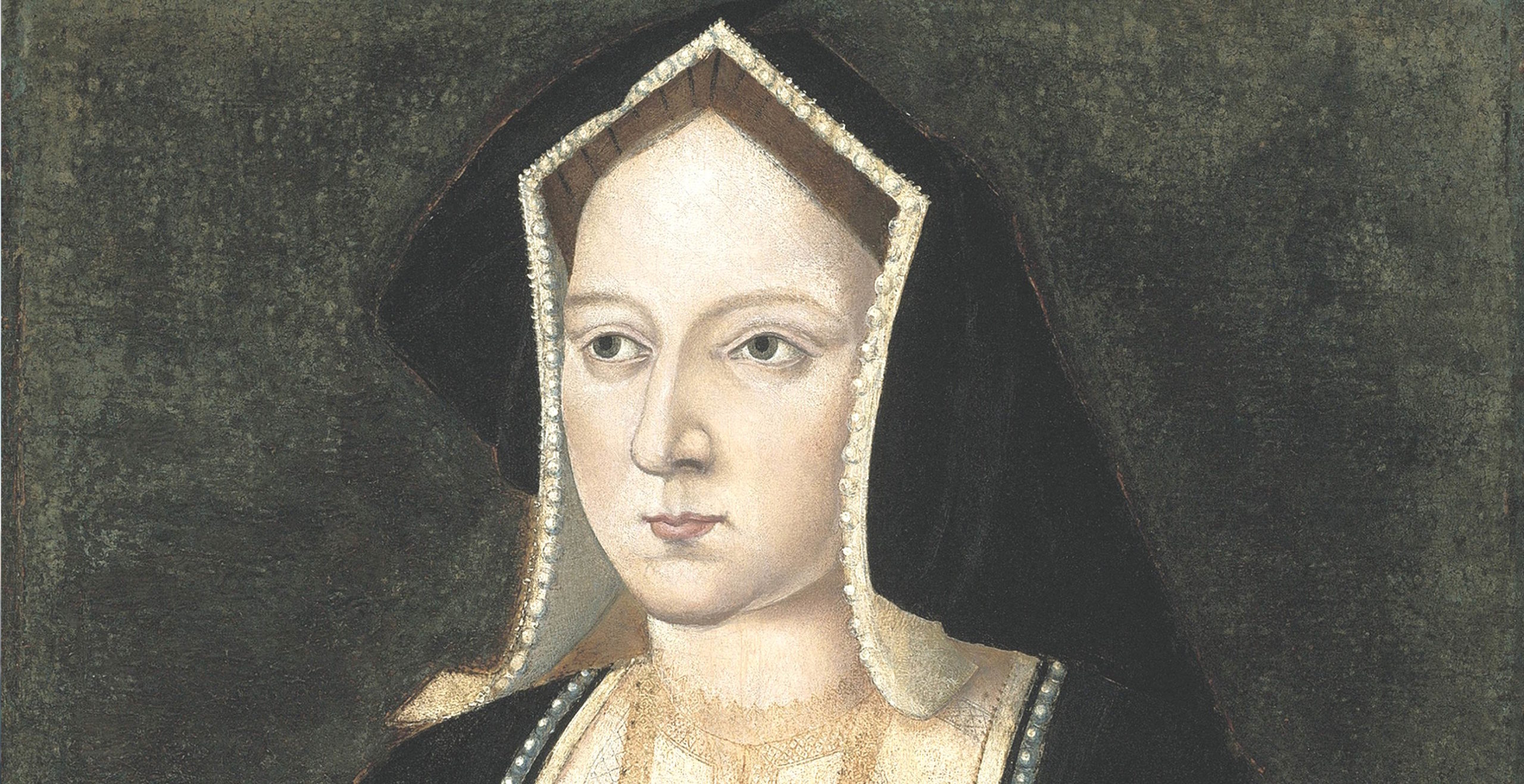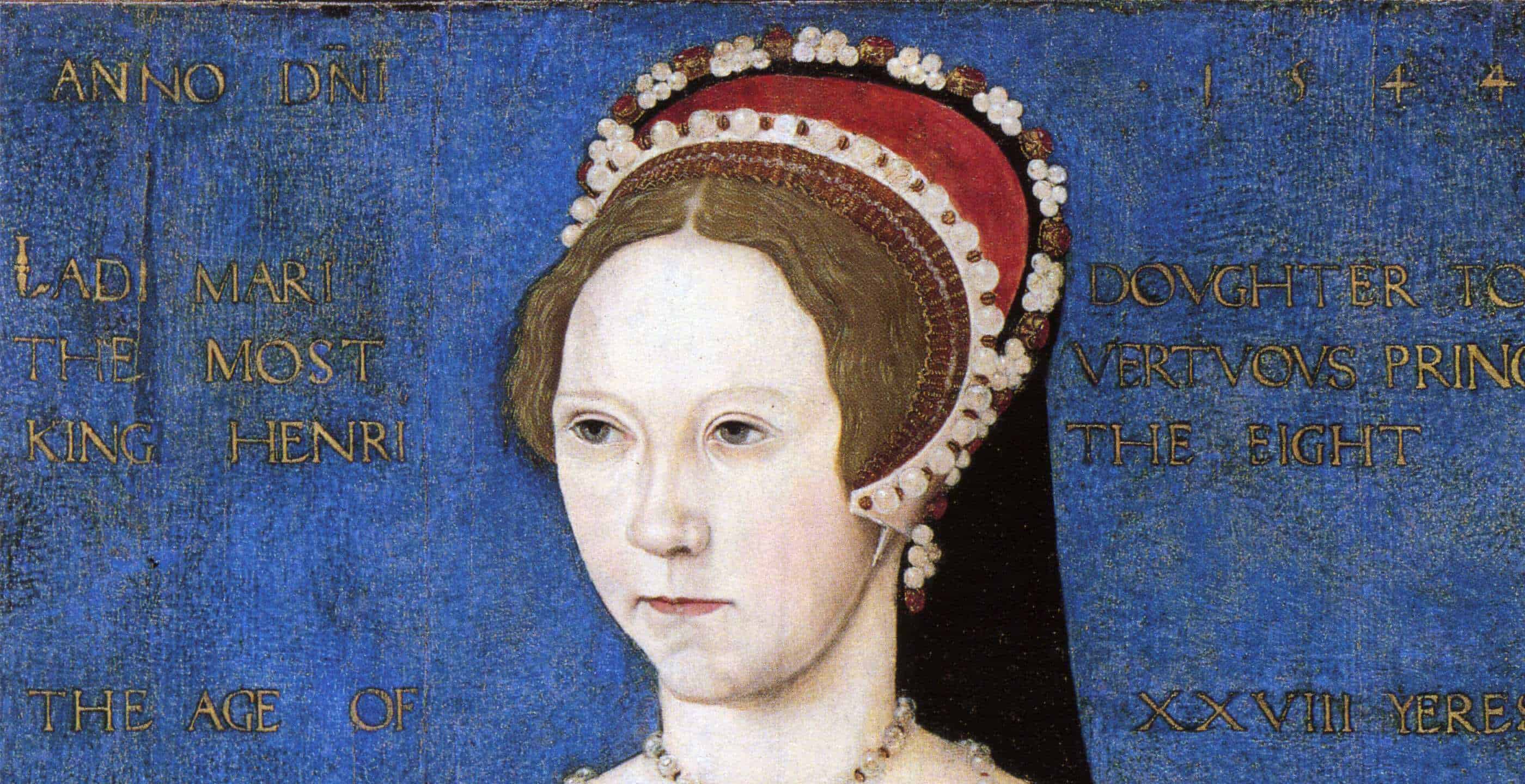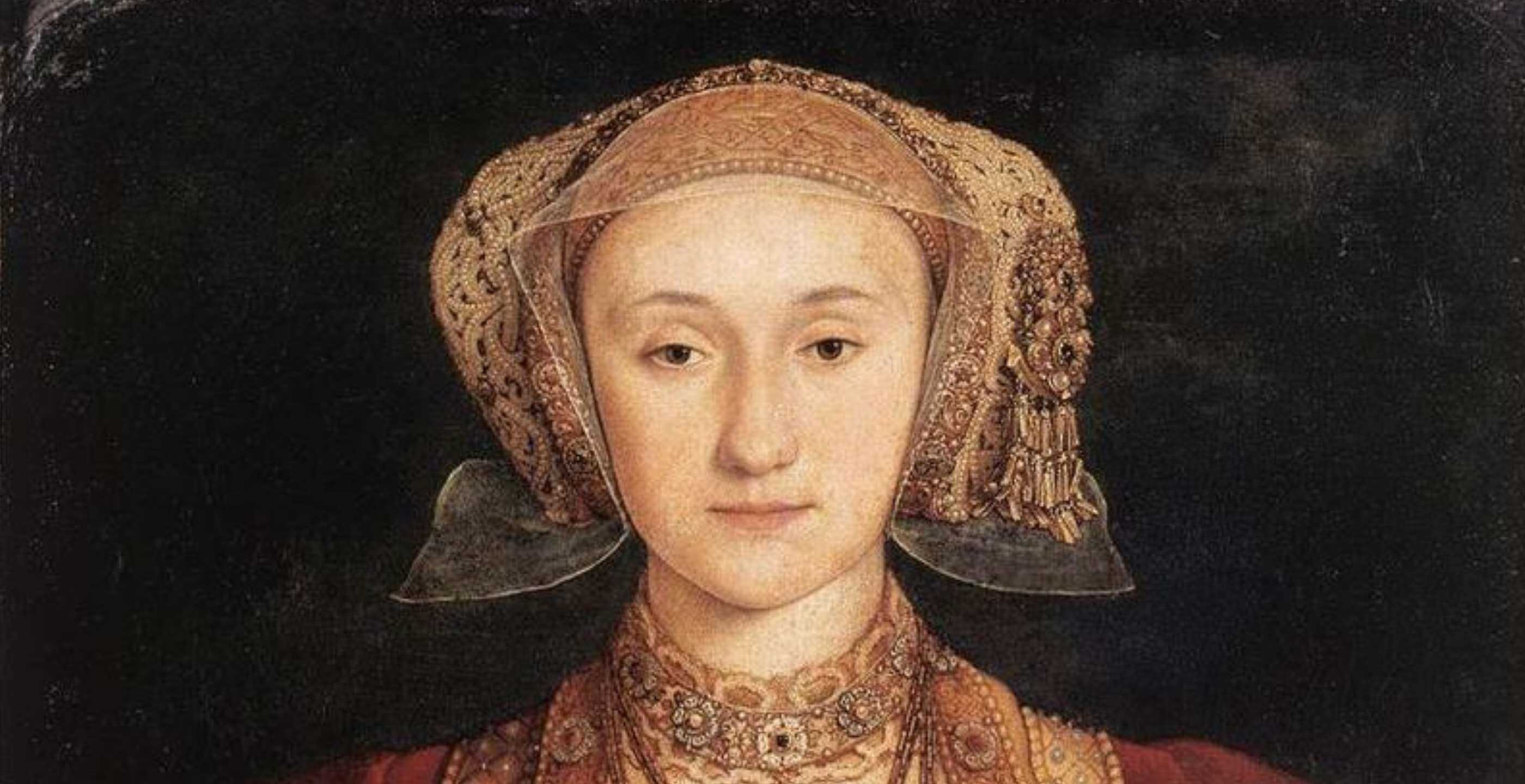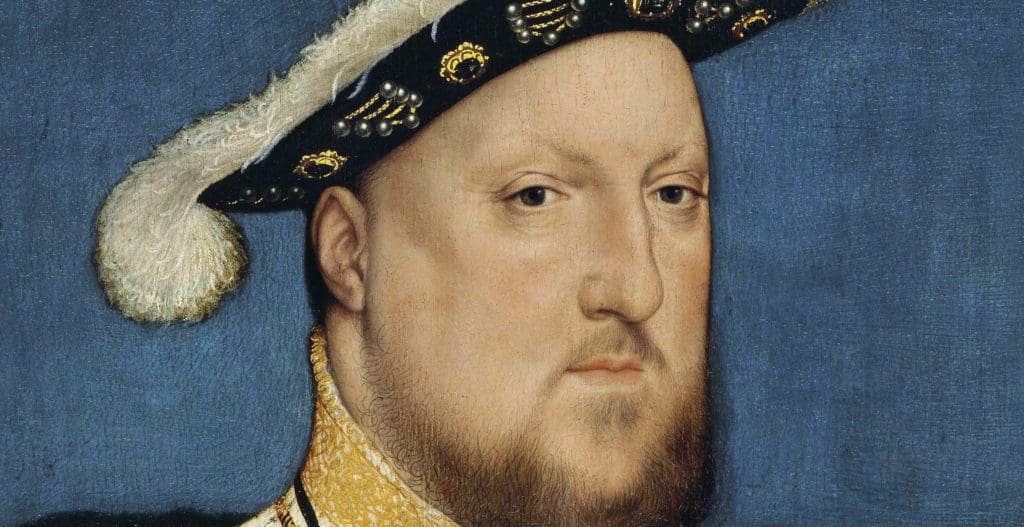In the Archiepiscopal Palace of Alcalá de Henares, near to the site of Katherine of Aragon’s birth, architects unveiled a statue of Henry VIII’s unshakeable Spanish queen in 2007. Reverent followers of Katherine of Aragon cluster around the monument each year on the anniversary of the queen’s death, much as they do at the site of Katherine’s grave at Peterborough Cathedral.
The statue shows Katherine as being deceptively tall – contemporaries described the queen as ‘not of tall statute, rather small’ – and in the glow of youth, with a river of bronze hair pulled away from her slender face, a placid gaze, and her wispy frame enrobed in a flowing gown splashed with the flowers of her homeland. The monument’s pithy inscription reads: ‘Catalina de Aragòn, 1485–1536, Alcalaína, Infanta de Castilla, Reina de Inglaterra.’
Katherine is depicted as she might have looked like as an Infanta of Spain, prior to her arrival in England in 1501 at the age of fifteen. But the most significant aspect of this statue is not the queen’s rosy appearance. Our gazes are intended to be drawn to the two items clasped in Katherine’s stony, unbending hand: a rose and a book – subtle tributes to Katherine’s husband’s family emblem, and the queen’s own remarkable intellect and life-long championing of education. Specifically, women’s education.
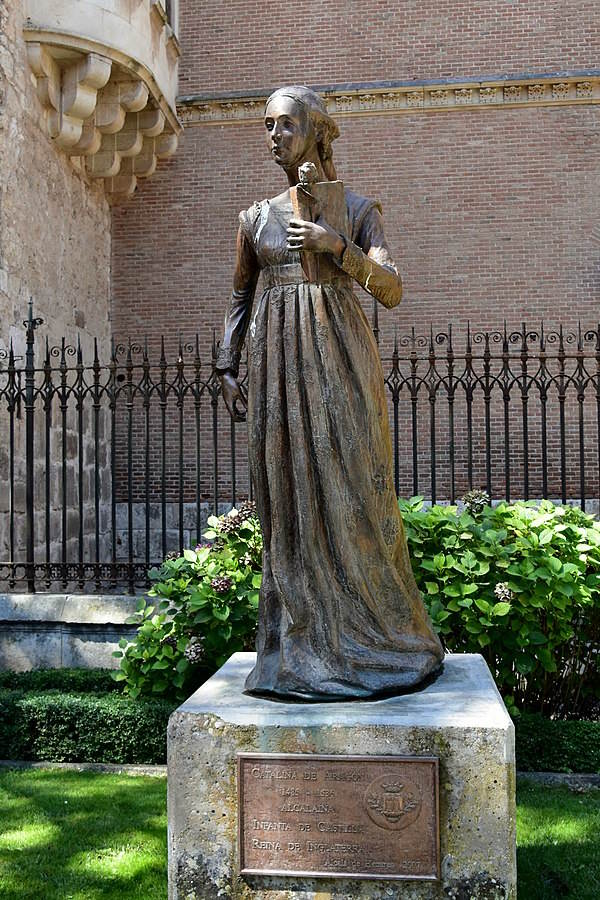
Katherine is often portrayed as Anne Boleyn’s foil – matronly, unsmiling, and inhibited by deep religious convictions – whereas her rival is an ambitious, clever, forward-thinking seductress. This antiquated depiction of Henry’s first wife is rooted in sexist stereotypes, and remains largely unfounded.
Nonetheless, it is Anne, Henry’s second wife, who is credited with being a ‘feminist queen’, responsible for England’s break from idolatrous Rome, and for inspiring the independence and success of her progressive daughter, Elizabeth I. On the contrary, it was Katherine who popularized women’s education in England, and may have influenced the Boleyns to inculcate their daughters likewise.
In her twenty-year tenure as consort, Katherine patroned renowned humanists such as Juan Luis Vives, presided as Europe’s first female ambassador, conciliated tense diplomatic negotiations between England and Spain, and educated her daughter, Mary, with the progressive and increasingly egalitarian ideals of the Renaissance sweeping throughout England. Thomas Cromwell, Henry’s shrewd statesman, recognized Katherine’s formidable power, declaring: ‘if not for her sex, she could have defied all the heroes of History.’
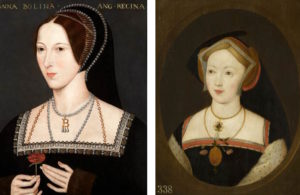
Anne and Mary Boleyn, Katherine’s ladies and rivals, may have been influenced by their mistress in their education.
Prior to Katherine’s accession to the throne, female literacy in England was often limited to mere signatures: women were instructed to sign their names following a letter written by a scribe, but not to pen the letter themselves. But in the 1520s, at the acme of Katherine’s influence, evidence reveals a ‘marked increase’ in letters written by women in their own hand. Katherine promoted her active interest in female literacy with regular visits to institutions of higher education, lengthy and meaty discussions with renowned thinkers such as Erasmus and Desiderus – who found in Henry’s Spanish queen illustrious patronage – and in the use of her daughter Mary’s education as a vehicle to produce and disseminate written works on women’s education.
It may have been for these very reasons that Thomas and Elizabeth Boleyn fought to educate their daughters, Anne and Mary, to a similar degree as their son, George.
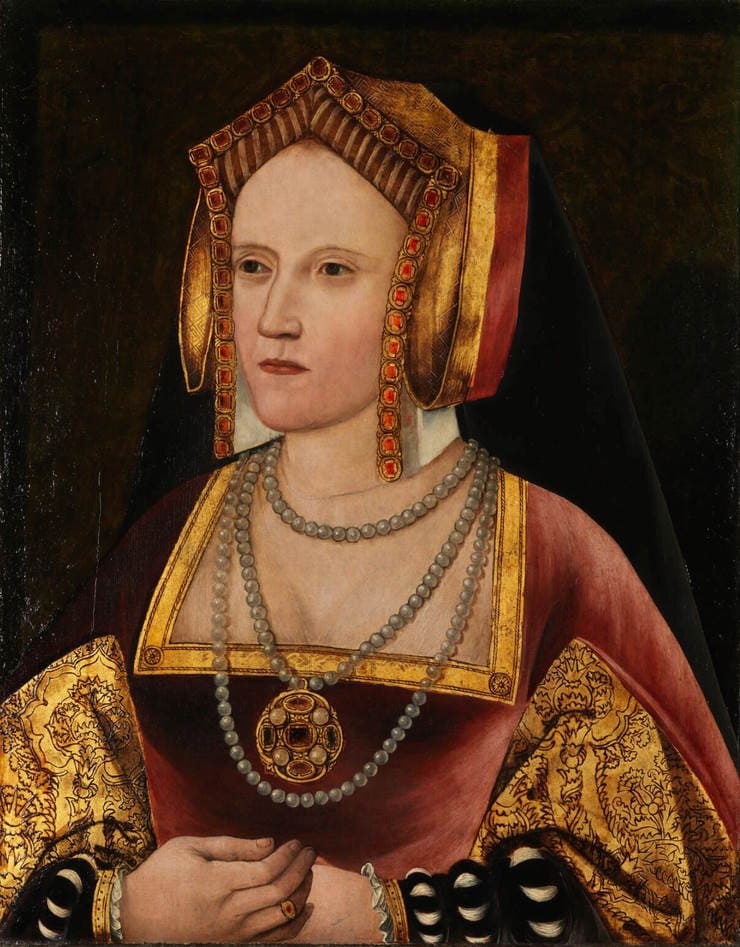
Katherine’s relationship with Juan Luis Vives, and their shared espousal of women’s education, is of particular note. Vives was a brilliant Spanish humanist, devoted to religion and education and a close friend and advisor to the queen, whose radical treatise ‘Education of a Christian Woman’ Katherine commissioned in 1523. Originally issued in Latin, Vives dedicated the book to Queen Katherine and although popular at the time of its publication, his advocacy for education for all women, irrespective of class and ability, was at the time a revolutionary, subversive idea.
Vives boldly argued that women were the intellectual equal, if not superior, to men, and that women’s progress was not only individually beneficial but essential for the good of the state.
We do not know what Henry VIII’s thoughts regarding Vives’ treatise were. Praised by Erasmus and Thomas More, we know that Henry shared with his wife a love of learning and theology and regretted that time forbade him from ‘studying more.’
New Learning, however, was rapidly invading England, and with Katherine’s and almost certainly Henry’s approval, Vives was later commissioned to create Satellitium Animi, or Escort of the Soul – a study plan for the Princess Mary, the couple’s only surviving daughter. Vives’ ‘spiritual mottoes and devices’ broke molds and would greatly influence women’s education throughout the 16th and 17th century, largely thanks to Queen Katherine’s patronage. Katherine also permitted Vives to direct the education of Princess Mary’s young friends, at least two of whom became leading figures in the English Reformation.
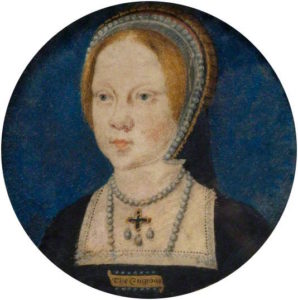
Miniature of Princess Mary Tudor, the only surviving daughter of Henry VIII and Katherine of Aragon. She would go on to be England’s infamous ‘Bloody Mary’.
Not merely allowing the task of her daughter’s edification to fall to Vives, Katherine herself set about teaching her daughter, imbuing her with the knowledge and skills perhaps passed onto Katherine by her own pioneering mother, Queen Isabella. She instructed Mary in the foundations of Latin and encouraged Mary’s ‘precocious skills’ in both dancing and music. But Henry’s Spanish queen was now well-past thirty and the idyllic days of plucking the lute and practicing tricky conjugations with her daughter were rapidly drawing to a tragic end.
Time had not treated Katherine gently. Her many years as Henry’s consort were difficult, both physically and emotionally, and plagued by a smattering of unfruitful pregnancies. But with her strength of character and commitment to the prospering of her adopted country, Katherine played a key role in the smoothing of political and international unrest, diplomatically defended England in major battles, and encouraged the education of her subjects, ladies, and only daughter who was herself, a future queen regnant. Ultimately, Katherine’s greatest show of resilience was in her refusal to accede to the King’s ruthless demands for a divorce.
Not content to dwell in passive victimhood, Katherine turned Henry’s cruelty to her own advantage and assembled across the realm a coterie of devoted followers, whose descendants continue to flock to monuments affiliated with this Spanish – and undoubtedly progressive – queen. Her championing of women’s education remains an overlooked but highly important aspect of her legacy in England, and may have played, albeit indirectly, a role in the edification and enlightenment of one of Britain’s greatest queens, Elizabeth I.
Daniella Novakovic is freelance writer, specialising in the Early Modern Period, a life-long student of the Tudor Age, and passionate about uncovering the truth behind the Six Wives. She is the author behind @tudorextra on Instagram.
Published: 24th February 2023
